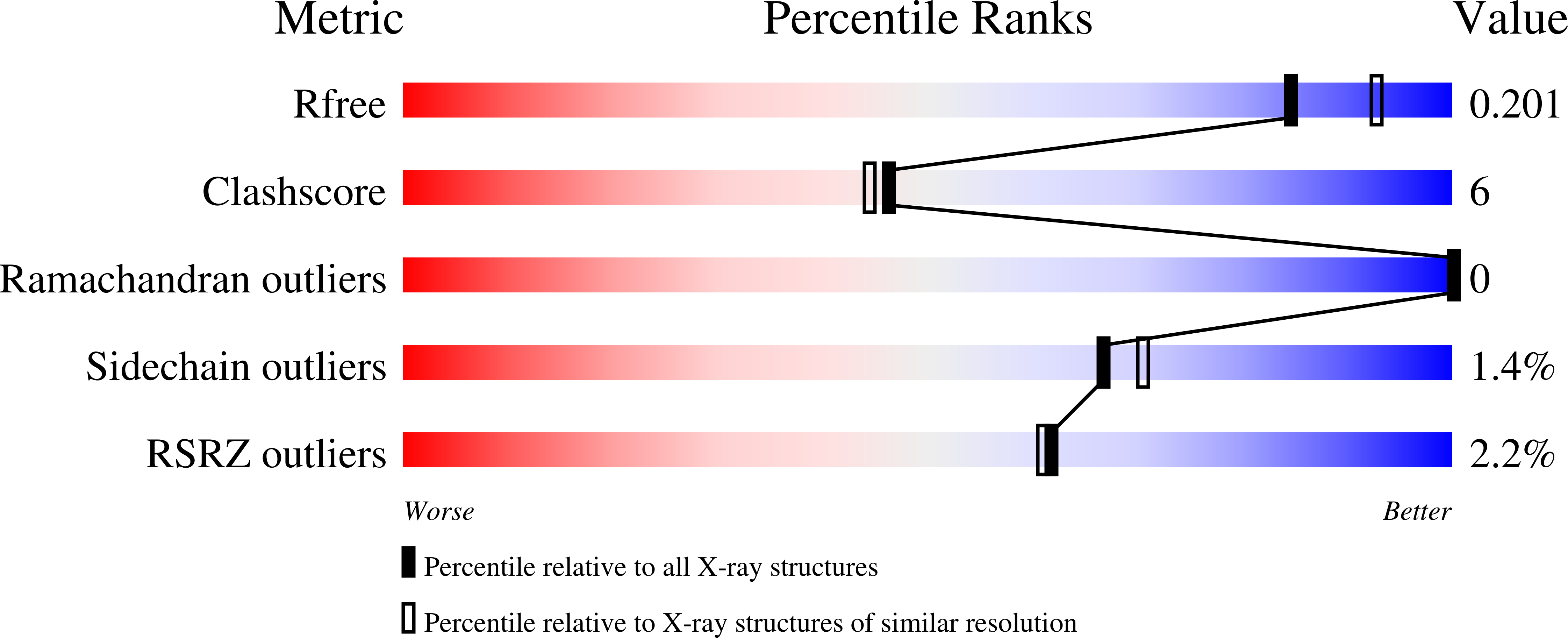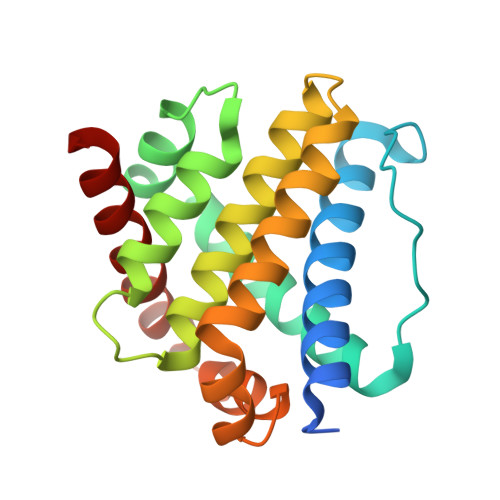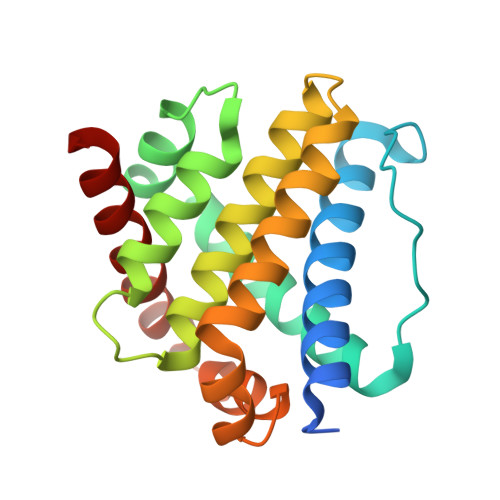BAX Activation: Mutations Near Its Proposed Non-canonical BH3 Binding Site Reveal Allosteric Changes Controlling Mitochondrial Association.
Dengler, M.A., Robin, A.Y., Gibson, L., Li, M.X., Sandow, J.J., Iyer, S., Webb, A.I., Westphal, D., Dewson, G., Adams, J.M.(2019) Cell Rep 27: 359-373.e6
- PubMed: 30970242
- DOI: https://doi.org/10.1016/j.celrep.2019.03.040
- Primary Citation of Related Structures:
6EB6 - PubMed Abstract:
To elicit apoptosis, BAX metamorphoses from an inert cytosolic monomer into homo-oligomers that permeabilize the mitochondrial outer membrane (MOM). A long-standing puzzle is that BH3 domains apparently activate BAX by not only its canonical groove but also a proposed site involving helices α1 and α6. Our mutagenesis studies reveal that late steps like oligomerization require activation through the groove but probably not earlier steps like MOM association. Conversely, α1 or α6 obstruction and alanine mutagenesis scanning implicate these helices early in BAX activation. The α1 and α6 mutations lowered BH3 binding, altered the BAX conformation, and reduced its MOM translocation and integration; their exposure of the BAX α1-α2 loop allosterically sequestered its α9 membrane anchor in the groove. The crystal structure of an α6 mutant revealed additional allosteric effects. The results suggest that the α1 and α6 region drives MOM association and integration, whereas groove binding favors subsequent steps toward oligomerization.
Organizational Affiliation:
Walter and Eliza Hall Institute of Medical Research, 1G Royal Parade, Parkville, Melbourne, Victoria 3052, Australia; Department of Medical Biology, University of Melbourne, Parkville, Melbourne, Victoria 3010, Australia.



















